Rarity: A Guide to Pokémon Card Classifications
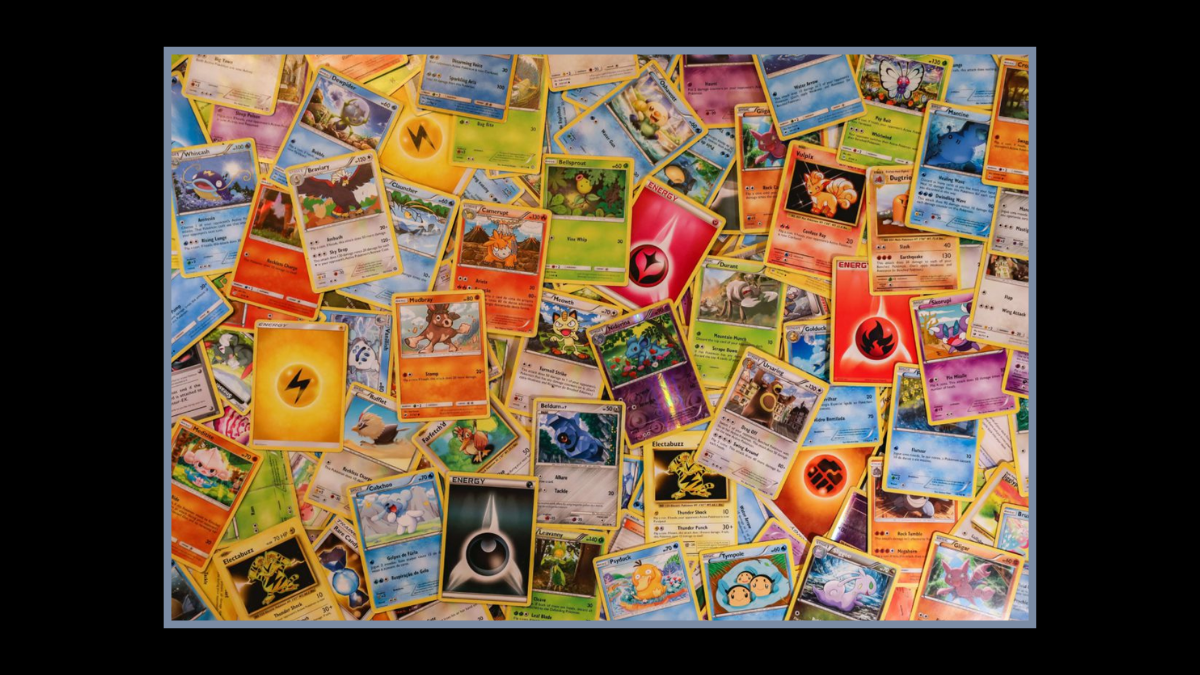
For collectors and players alike, one of the most exciting aspects of the Pokémon Trading Card Game (TCG) is the thrill of discovering rare and valuable cards. But what exactly makes a Pokémon card rare, and how can you identify the different levels of rarity? In this guide, we’ll break down the various classifications of Pokémon cards, from common to secret rare, and explain what makes each category valuable.
Common Cards
Definition:
Common cards are the most abundant type of Pokémon cards. They are easily found in booster packs and are usually the backbone of any collection. Common cards are identified by a black circle (●) located at the bottom of the card, next to the card number.
Characteristics:
Simple Design: Common cards typically feature basic Pokémon with straightforward abilities or attacks.
Wide Availability: Because they are so common, these cards are often less sought after by collectors.
Lower Value: Common cards generally have the lowest monetary value, unless they are part of a first edition or feature a unique printing error.
Value Factors:
While most common cards are not particularly valuable, their worth can increase if they belong to an older set, are in mint condition, or are part of a complete set. First edition common cards from the original base set, for example, can fetch higher prices.
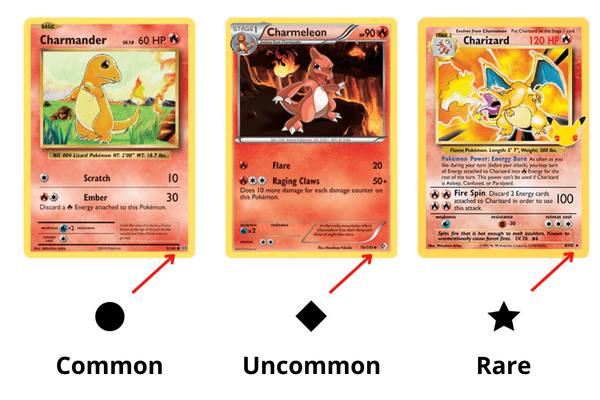
Uncommon Cards
Definition:
Uncommon cards are slightly harder to find than common cards. These cards are identified by a black diamond (◆) at the bottom of the card, next to the card number.
Characteristics:
More Complex Abilities: Uncommon cards often feature Pokémon with more powerful or unique abilities compared to common cards.
Moderate Availability: These cards are more challenging to find in booster packs, making them more desirable.
Intermediate Value: Uncommon cards typically have a moderate value, especially if they are part of a popular or older set.
Value Factors:
The value of uncommon cards increases if they are in pristine condition, are from limited print runs, or are sought after in competitive play due to their abilities.
Rare Cards
Definition:
Rare cards are less frequently found in booster packs and are identified by a black star (★) at the bottom of the card. These cards often feature more powerful Pokémon and play a crucial role in the game.
Characteristics:
Enhanced Abilities: Rare cards usually feature evolved Pokémon with powerful attacks and abilities.
Lower Availability: These cards are much harder to pull from packs, making them highly desirable.
Higher Value: Rare cards have a higher monetary value compared to common and uncommon cards, especially if they are in good condition.
Value Factors:
The value of rare cards can be influenced by factors such as their set, condition, and playability in the Pokémon TCG. First edition rare cards, particularly from the base set, are among the most valuable.
Holographic (Holo) Cards
Definition:
Holographic, or holo cards, are a type of rare card that features a shiny, reflective foil on the artwork of the Pokémon. These cards are identified by a black star (★) but stand out due to their holographic finish.
Characteristics:
Visual Appeal: The holographic foil makes these cards visually striking and highly collectible.
Increased Rarity: Holo cards are harder to find than regular rare cards, adding to their desirability.
Significant Value: Holographic cards are generally more valuable than non-holo rares, especially if they feature popular Pokémon.
Value Factors:
Holo cards from the original base set or cards featuring iconic Pokémon like Charizard, Blastoise, or Pikachu can be extremely valuable, especially if they are in mint condition.
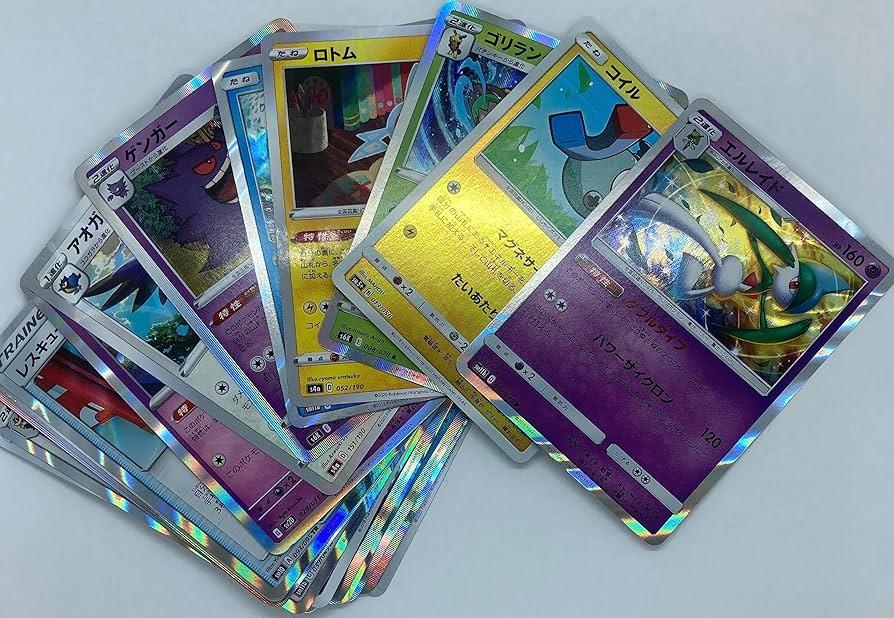
Reverse Holographic (Reverse Holo) Cards
Definition:
Reverse holographic cards feature a shiny, reflective foil on the card’s background, rather than the Pokémon itself. These cards can be common, uncommon, or rare and are identified by the usual symbols but have a distinctive holographic finish on everything except the Pokémon image.
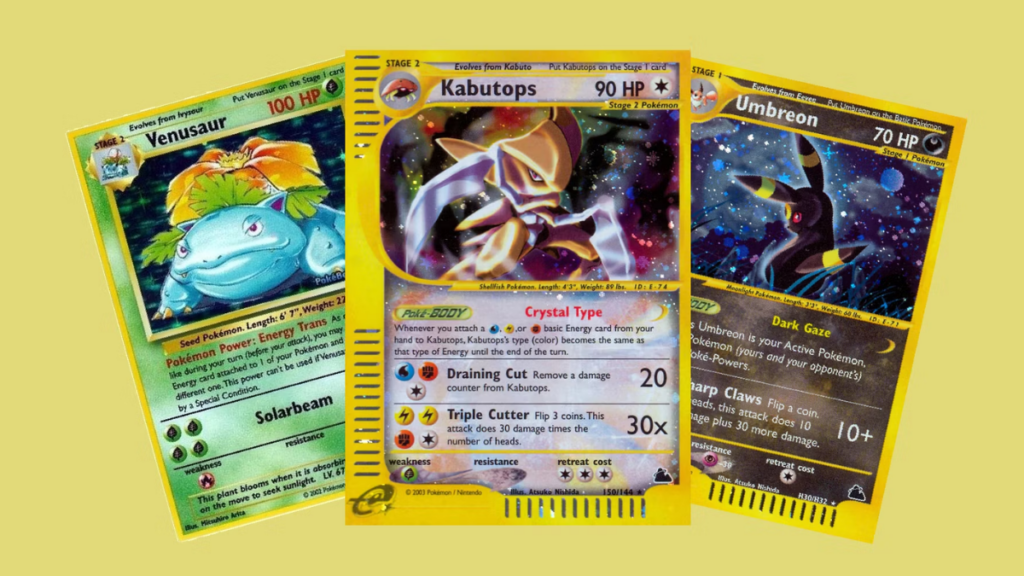
Characteristics:
Unique Appearance: The reverse holo effect makes these cards stand out in any collection.
Varied Rarity: Reverse holo cards can range in rarity from common to rare, depending on the set.
Moderate to High Value: The value of reverse holo cards depends on the rarity of the base card and the condition of the card.
Value Factors:
Collectors often seek reverse holo cards to complete sets, which can increase their value. Older reverse holo cards or those featuring popular Pokémon are particularly valuable.
Ultra Rare Cards
Definition:
Ultra rare cards are a step above regular rare cards and are identified by their unique features, such as full-art designs, EX/GX/V cards, or special texturing. They often include Pokémon-EX, Pokémon-GX, Pokémon V, and VMAX cards, among others.
Characteristics:
Special Features: Ultra rare cards often have full-art designs, special textures, or additional effects that set them apart from other cards.
High Rarity: These cards are difficult to pull from booster packs, making them highly sought after.
Significant Value: Due to their rarity and unique features, ultra rare cards often command higher prices on the secondary market.
Value Factors:
Ultra rare cards featuring fan-favourite Pokémon or that are key to competitive decks tend to be the most valuable. Their condition, set, and print run also play a significant role in determining their worth.
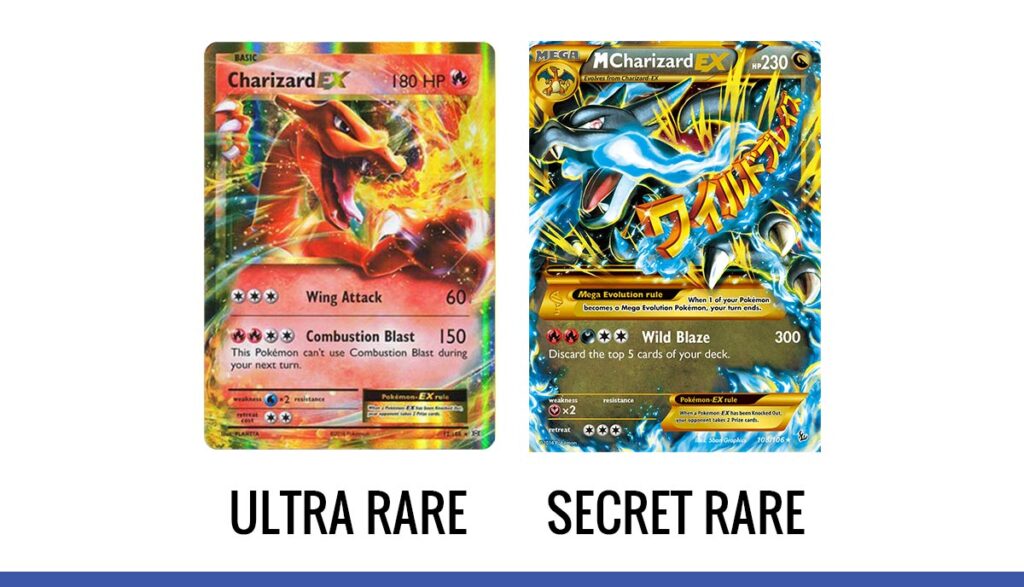
Secret Rare Cards
Definition:
Secret rare cards are some of the most elusive and valuable cards in the Pokémon TCG. They are identified by a card number that exceeds the set number (e.g., 101/100), indicating that they are beyond the standard set list.
Characteristics:
Unique Numbering: The card number of a secret rare exceeds the total number of cards in the set, making them stand out.
Extremely Rare: Secret rare cards are incredibly difficult to find in booster packs, adding to their allure.
High Value: These cards are often among the most valuable in any set, especially when they feature popular Pokémon or special designs.
Value Factors:
The scarcity of secret rare cards makes them highly desirable among collectors. Their value is influenced by factors such as the Pokémon featured, the card’s condition, and its role in the competitive scene.
Also Read: Pokémon Theme Song: Why It’s So Memorable
Rainbow Rare and Shiny Pokémon Cards
Definition:
Rainbow rare and shiny Pokémon cards are special types of secret rare cards. Rainbow rare cards feature a rainbow-coloured foil, while shiny Pokémon cards depict Pokémon in their alternate colour schemes.
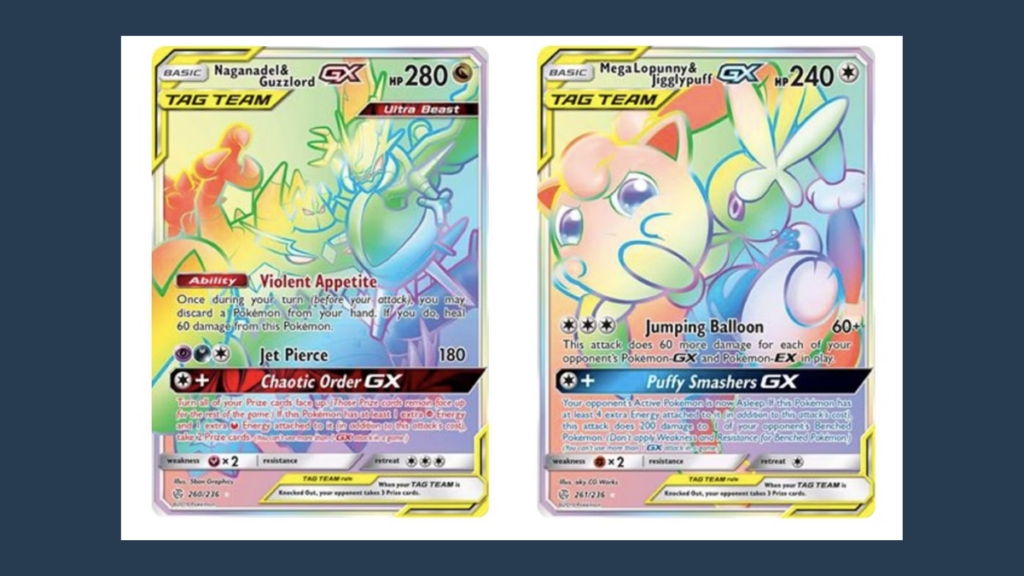
Characteristics:
Vibrant Designs: The rainbow and shiny finishes make these cards visually stunning and highly collectible.
Extreme Rarity: These cards are among the rarest in the Pokémon TCG, often found only once or twice in a case of booster boxes.
Top-Tier Value: Due to their rarity and unique designs, rainbow rare and shiny Pokémon cards are some of the most valuable cards in any set.
Value Factors:
Rainbow rare and shiny Pokémon card decks featuring popular or legendary Pokémon can fetch exceptionally high prices. Their value is also influenced by their condition, print quality, and popularity within the collector community.
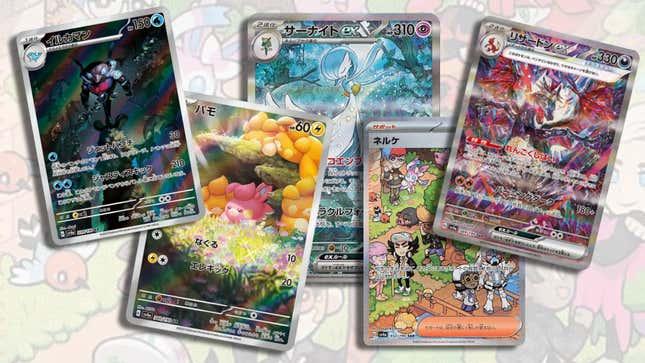
Understanding the rarity classifications in the Pokémon TCG is crucial for collectors and players alike. Each level of rarity, from common to secret rare, brings its own appeal and value. Whether you’re looking to build a powerful deck, complete a collection, or invest in rare cards, knowing what to look for can help you make informed decisions and appreciate the intricacies of the Pokémon Trading Card Game.
–Silviya.Y








